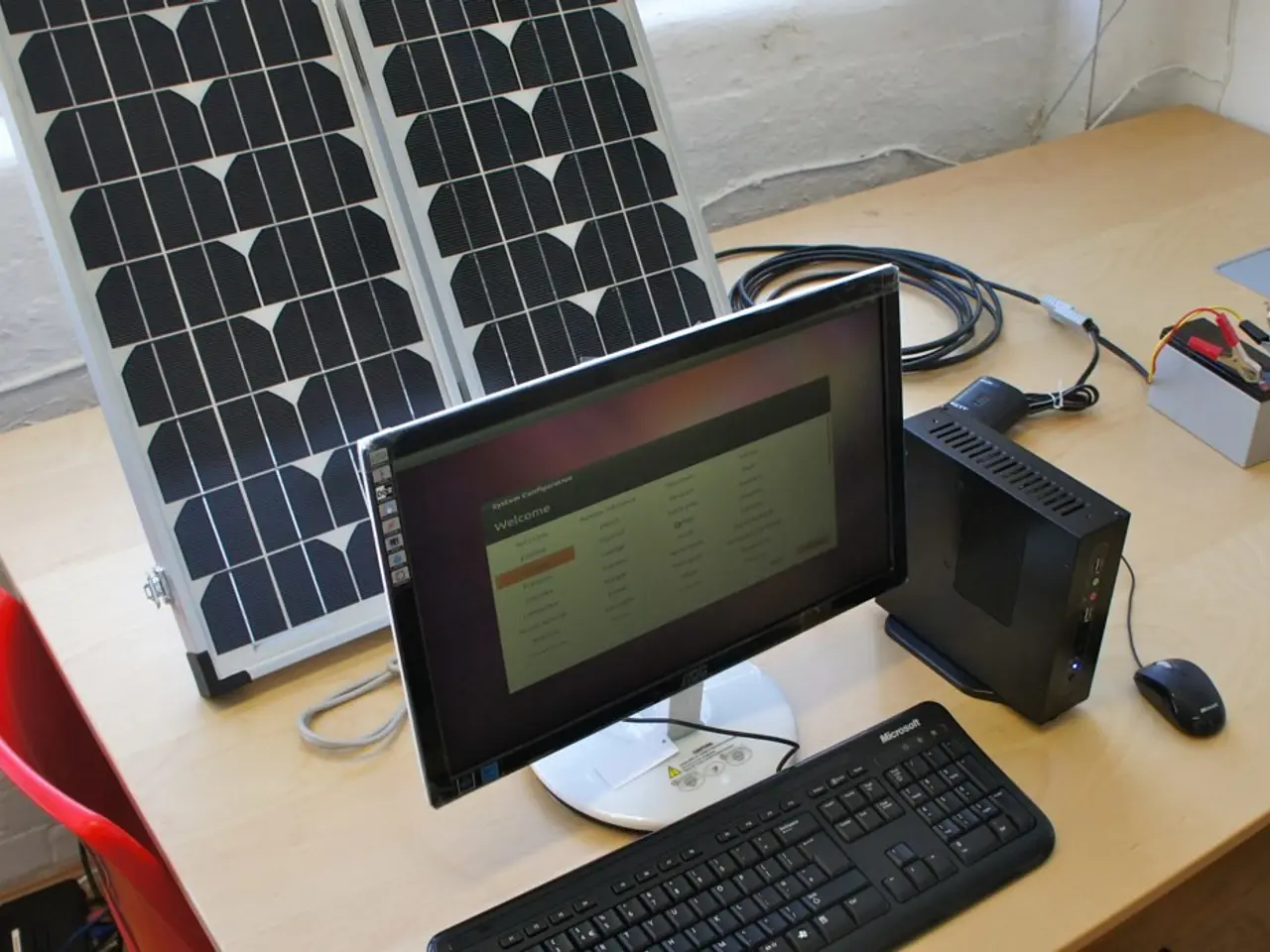Revelations push solar cell efficiency to unpreseen highs
In a groundbreaking development, researchers at TU Dresden and the University of Pavia in Italy have made significant strides in improving the efficiency and stability of metal halide perovskites for solar cells. This advancement could potentially pave the way for the large-scale market introduction of perovskite solar cells.
Until now, perovskite solar cells have been considered not stable enough for large-scale use by many experts. However, the team's new models show promise in powering homes in the near future. They have managed to overcome two hurdles at once: improving efficiency and stability.
The approach taken by the researchers is directly transferable to the production of large-area devices, making it easier to integrate perovskite components into modern products like flexible or portable electronics. This is a significant advantage over the complex production processes that have previously prevented their integration into such products.
The standard production process for perovskite solar cells requires high temperatures and energy input, resulting in a poor CO2 balance. However, the new method allows for the production of these cells at low temperatures below 100 degrees Celsius.
The introduction of small amounts of organic halogenide salts on both sides of the active perovskite layer has led to significant changes in the interfaces. These organic halogenide salts suppress structural defects and cause defect states in the perovskite layer to become passive, thereby improving the overall stability of the solar cells.
The researchers have exceeded the previous efficiency record for an inverted architecture perovskite solar cell with a measurement of 23.7%. This solves the problem of lower efficiency in the inverted architecture for perovskite solar cells, making them a viable alternative to traditional silicon and thin-film solar cells.
Solar cells based on metal halide perovskites can now compete with known silicon and thin-film solar cells in terms of efficiency. In fact, the Chinese photovoltaic company Longi currently produces Perovskite-Silicon solar cells most frequently and holds the record for efficiency with a cell presented last year reaching nearly 35% efficiency. Other major players in the Perovskite solar cell market include Saule Technologies, GCL Suzhou Nanotechnology Co., Ltd., Wuxi Utmolight Technology Co., Ltd., and Hunt Perovskite Technologies.
Metal halide perovskites consist of inexpensive materials and can be produced using simple methods. This affordability and ease of production make them an attractive option for the future of solar energy technology. The researchers hope for imminent commercial deployment of solar cells based on these promising materials.
Read also:
- Peptide YY (PYY): Exploring its Role in Appetite Suppression, Intestinal Health, and Cognitive Links
- Toddler Health: Rotavirus Signs, Origins, and Potential Complications
- Digestive issues and heart discomfort: Root causes and associated health conditions
- House Infernos: Deadly Hazards Surpassing the Flames








